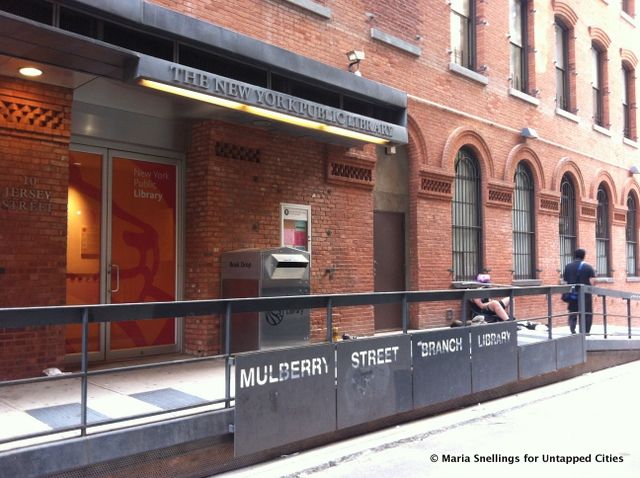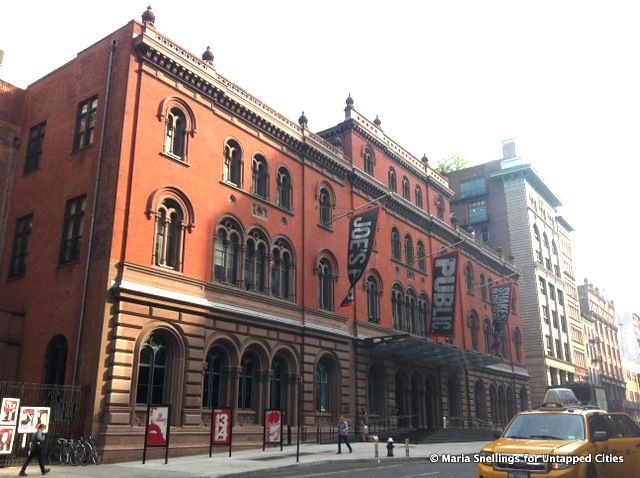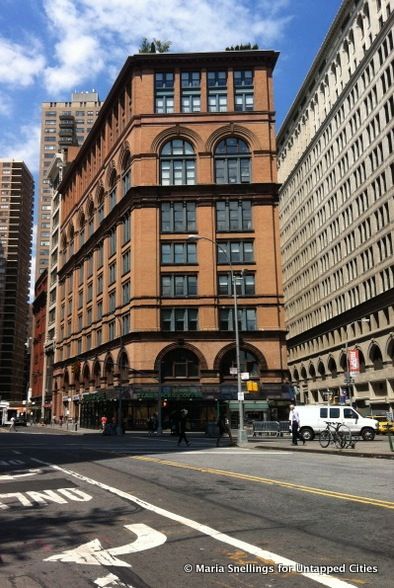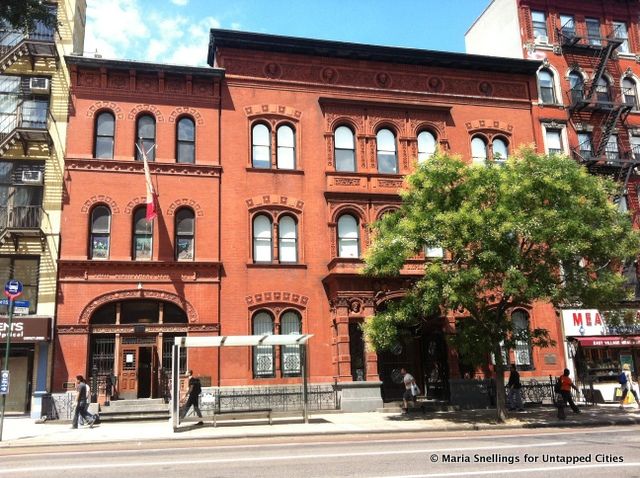Rediscovering WPA Poster Art of the National Parks with Ranger Doug
Join "Ranger of the Lost Art" Doug Leen for a virtual book talk about preserving the lost 1930s art of America's National Parks!


While the iconic Jefferson Market Library in the West Village is the most well known to preservationists, many former and existing libraries in the East Village also have a rich history and visually distinct architectural details. We recently took a tour focusing on this topic with the Greenwich Village Society for Historic Preservation (GVSHP) led by John Bacon, the Director of Planned Giving at the New York Public Library.

The Mulberry Street Library is one of the city’s newest libraries. It opened in 2007 after undergoing three years of construction. Previously, the building was a chocolate factory owned by Hawley & Hoops’ Chocolate Candy Cigars. Inside, the combination of new metal, wood and brick creates a modern look without ignoring the building’s history. In the ceiling, horizontal timber beams are supported by cast iron pillars. The metal frame of the staircase and the wooden railings echo this relationship. Only the basement reveals the brick walls in their entirety.
The Bond Street Branch of the New York Public Library (NYPL) was erected in 1899 as the first New York Free Circulating Library (NYFCL), which later became part of the NYPL system. The building weathered the NYFCL’s extension and its consolidation with the NYPL, but was demolished in 1918. The branch then moved to 49 Bond until 1919.
Where NYFCL’s original building stood, a parking lot occupied the location for some time until the large modern apartment building that Bacon referred to as the, “Coca-Cola bottle glass,” was built.

Although the library no longer exists, a culture of creativity still pervades the block. Down the street is the apartment where Chuck Close lived, right alongside where Robert Mapplethorpe lived. On the sidewalk across the street is granite sidewalk incised with a continuous single-line design by Japanese stone sculptor Ken Hiratsuka.


The Joseph Papp Public Theater was once the Astor Public Library. John Jacob Astor started the building’s construction, but after he died in 1849 his sons completed the project.
Built over three decades the Library had three different architects. In 1849, Architect Alexander Saeltzer started to design the South Wing. In 1856, the second architect of the library, Griffith Thomas, created the center section of the building. Thomas Stent arrived last to design the North Wing, which was finished in 1881.
Today the Astor Public Library is the Joseph Papp Public Theater, also known as, Joe’s Pub. The theater has been operating since the 1950s and continues to be a popular venue and a New York icon.
Just across the street from the Astor Public Library, the Astor Place Riot took place in 1854, breaking out in front of an opera house. The theater was never able to live down its negative association with the riot and its interior was demolished in 1853. In 1890 the entire neoclassical building was demolished and replaced by the 11-story structure below. The building was eventually turned over to the New York Mercantile Library Association, which is now The Center For Fiction.

The original Astor Place Opera House, watercolor by Charles M. Jenckes from the Metropolitan Museum of Art:
The Ottendorfer Library was the first free public library in New York City. It is also the oldest NYPL building still functioning as a library. Oswald Ottendorfer founded this branch in the 1884–a full ten years before NYPL was chartered–as a gift to Kleindeutschland (Little Germany) neighborhood. German immigrant Architect William Schickel designed the building under a neo-Italian Renaissance influence. The library has terra-cotta detailing over the arches of the doors and window. Originally the library shelves held books in English and in German. Today the library has been restored and offers multilingual texts.

Read more about the historic Jefferson Market Library here and learn more about the Greenwich Village Society for Historic Preservation on their website.
Subscribe to our newsletter